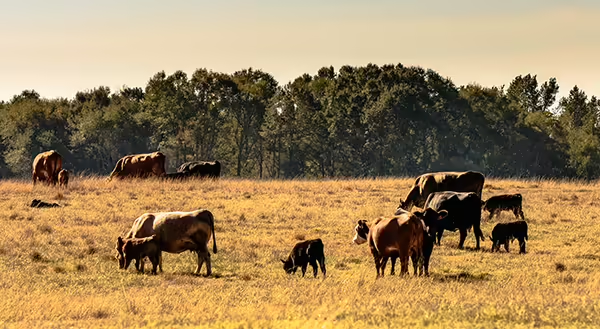
Cattle producers have been watching pasture productivity underperform due to dry conditions. Lower forage availability in pastures and hayfields has farmers investigating alternative forage options.
Protecting Pastures
Supplementing stressed pastures with hay can help fill the forage gap. It is crucial to feed hay as efficiently as possible, especially with elevated hay prices. Unrolling only the amount of hay cows will eat is a strategy that can be deployed. Unrolling large quantities of hay will result in waste. Improved hay feeder designs can also limit waste and prevents spoilage. Drought conditions result in poor hay availability and increased prices. Thus, purchase and feed hay wisely to avoid ruining profit potential in your cattle operation.
Cornstalks, Straw, CRP Hay
While these forages are not traditionally the preferred choice, they are viable options to help meet roughage requirements. It is important to understand that these poor quality forages will fall short of meeting nutritional needs of your herd. When using straw, cornstalks, and CRP Hay, supplements are needed to fully meet protein and energy requirements. Options include distillers’ grain, corn gluten feed, soybean hulls, or grains. Processing or chopping straw and stalks can reduce particle sized helping decrease sorting and increase intake.
Soybeans for Hay
If drought conditions worsen, harvesting soybeans for hay or silage can be a good way to salvage beans. When harvesting soybeans for forage you should harvest them when the leaves begin to turn yellow, but before pods drop. Soybean hay can have similar nutritional value to alfalfa hay if harvested properly.
Incorporate Total Mixed Rations
Feeding a total mixed ration (TMR) allows you to be in complete control of your livestock’s diet. TMR’S do require equipment and infrastructure. By controlling the amount and type of roughage in a diet waste can be reduced. Using a TMR can allow a variety of different ingredients to be combined into a balanced, least-cost ration. Many times wet feeds, off-spec waste stream products, and poor quality forages can be utilized much more efficiently to create a low-cost ration for beef cows.
Summer Annuals
As poor as pastures are looking across the state it’s worthwhile to consider planting summer annuals to fill forage needs. There are many different variety’s available including sorghums, sudangrass, teff, and millets.
Planting summer annuals needs to be timely and the window for planting is closing. Areas planted with summer annuals can be ready for use in as little as forty-five days if the weather cooperates. One thing to keep in mind with summer annuals is nitrate toxicity. Forages may need to be tested before allowing livestock to graze.
Overall, its time evaluate potential alternative roughages. Thinking outside the box can be a big advantage during times of challenge. Utilizing current hay as efficiently as possible is important. Alternative forages can be incorporated into beef cow rations with proper planning.